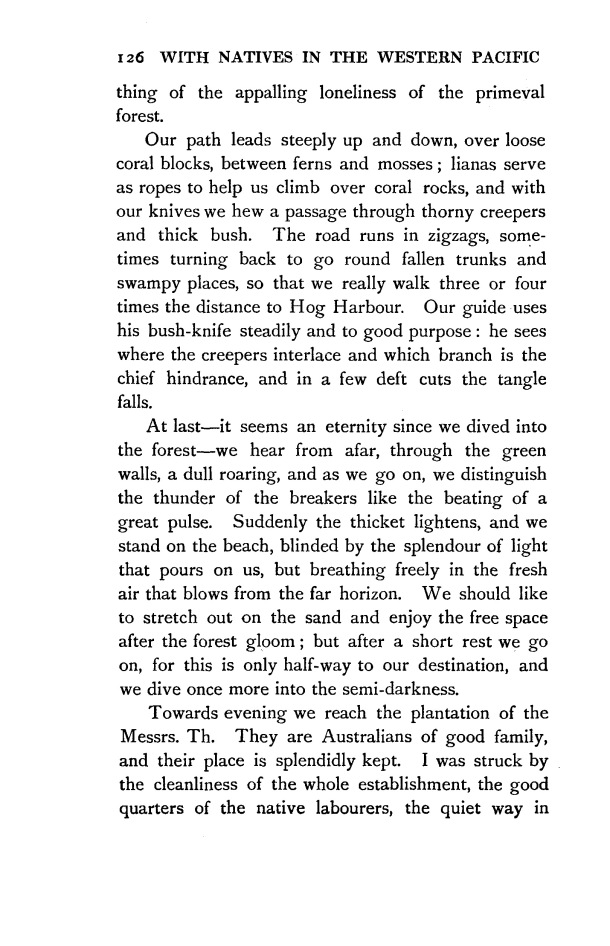|
|  [Note: this transcription was produced by an automatic OCR engine]
126 WITH NATIVES IN THE WESTERN PACIFIC
thing of the appalling loneliness of the primeval
forest.
Our path leads steeply up and down, over loose
coral blocks, between ferns and mosses; lianas serve
as ropes to help us climb over coral rocks, and with
our knives we hew a passage through thorny creepers
and thick bush. The road runs in zigzags, some-
times turning back to go round fallen trunks and
swampy places, so that we really walk three or four
times the distance to Hog Harbour. Our guide uses
his bush-knife steadily and to good purpose : he sees
Where the creepers interlace and which branch is the
chief hindrance, and in a few deft cuts the tangle
falls.
At lastv—it seems an eternity since we dived into
the forest—we hear from afar, through the green
walls, a dull roaring, and as we go on, we distinguish
the thunder of the breakers like the beating of a
great pulse. Suddenly the thicket lightens, and we
stand on the beach, blinded by the splendour of light
that pours on us, but breathing freely in the fresh
air that blows from the far horizon. We should like
to stretch out on the sand and enjoy the free space
after the forest gloom; but after a short rest we go
on, for this is only half-way to our destination, and
we dive once more into the semi-darkness.
Towards evening we reach the plantation of the
Messrs. Th. They are Australians of good family,
and their place is splendidly kept. I was struck by ,
the cleanliness of the whole establishment, the good
quarters of the native labourers, the quiet way in
|